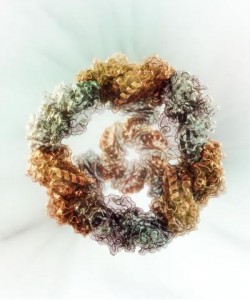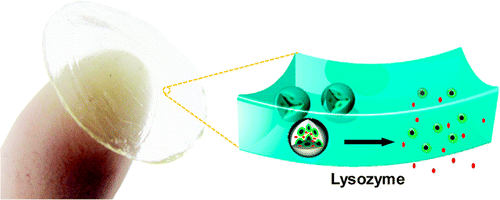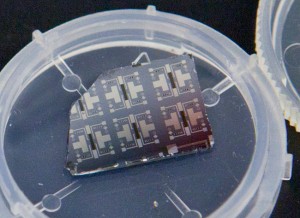As far as I can tell, the 2015 opening date for a new building is still in place but, in the meantime, publicists are working hard to remind everyone about China’s Nanopolis complex (mentioned here in a Jan. 20, 2014 posting, which includes an architectural rendering of the proposed new building).
For the latest information, there’s a Sept. 25 2014 news item on Nanowerk,
For several years now Suzhou Industrial Park (SIP) has been channeling money, resources and talent into supporting three new strategic industries: nano-technology, biotechnology and cloud computing.
In 2011 it started building a hub for nano-tech development and commercialization called Nanopolis that today is a thriving and diverse economic community where research institutes, academics and start-up companies can co-exist and where new technology can flourish.
Nanopolis benefits from the cross-pollination of ideas that come from both academia and business as it is right next door to the Suzhou Dushu Lake Science & Education Innovation District and its 25 world-class universities.
Earlier this year the University of California, Los Angles [sic] (UCLA) set up an Institute for Technology Advancement that is developing R&D platforms focusing on areas such as new energy technology and in particular nanotechnology. And Oxford University will soon join the growing list of world-class universities setting up centers for innovation there.
To develop a critical mass at Nanopolis SIP has offered incentive plans and provided incubators and shared laboratories, even including nano-safety testing and evaluation. It has also helped companies access venture capital and private equity and eventually go public through IPOs [initial public offerings {to raise money on stock exchanges}].
A Sept. 25, 2014 Suzhou Industrial Park news release (on Business Wire), which originated the news item, provides an interesting view of projects and ambitions for Nanopolis,
To develop a critical mass at Nanopolis SIP has offered incentive plans and provided incubators and shared laboratories, even including nano-safety testing and evaluation. It has also helped companies access venture capital and private equity and eventually go public through IPOs.
Many companies in Nanopolis are already breaking new ground in the areas of micro and nano-manufacturing (nanofabrication, printed electronics and instruments and devices); energy and environment (batteries, power electronics, water treatment, air purification, clean tech); nano materials (nano particles, nano structure materials, functional nano materials, nano composite materials); and nano biotechnology (targeted drug delivery, nano diagnostics, nano medical devices and nano bio-materials).
Zhang Xijun, Nanopolis’ chief executive and president, says the high-tech hub goes beyond what typical incubators and accelerators provide their clients and he predicts that its importance will only grow over the next five years as demand for nano-technology applications continues to pick up speed.
“As more and more companies want upstream technology they are going to be looking more at nano-technology applications,” he says. “The regional and central government is taking this field very seriously–there is a lot of support.”
Nanopolis can also serve as a bridge for foreign companies in terms of China market entry. “Nanopolis has become like a gateway for companies to access the Chinese market, our research capabilities and Chinese talent,” he says.
Owen Huang, general manager of POLYNOVA, a nano-tech company that set up in SIP five years ago, counts Apple as one of its customers and has annual sales of US$4 million, says the excellent infrastructure, supply chain and international outlook in Nanopolis are part of its allure.
“This site works along the lines of foreign governments and there is no need to entertain local officials [as is often customary in other parts of China],” he says. “Everyone is treated the same according to international standards of business.”
Nanopolis also can serve as a kind of go-between for bilateral projects between businesses and governments in China and those from as far away as Finland, the Netherlands and the Czech Republic.
In November 2012, for example, China’s Ministry of Science and Technology and Finland’s Ministry of Employment and the Economy built the China-Finland Nano Innovation Centre to jointly develop cooperation in the research fields of micro-nanofabrication, functional materials and nano-biomedicine.
SIP is also raising the profile of nano-tech and its importance in Nanopolis by hosting international conferences and exhibitions. From Sept. 24-27 [2014] the industrial park is hosting the ChiNano conference, which will be attended by more than more 700 nano-tech specialists from over thirty countries.
Zhang emphasizes that collaboration between academia and industry is an essential aspect of innovation and commercialization and argues that Nanopolis’ appeal goes beyond professor-founded companies. “The companies are in a position to provide good internship programs for students and there are also joint professorship positions made possible,” he explains. “We can also optimize school courses so they are better linked to industry wherever possible.”
Nanopolis’ creators expect that their holistic approach to business development will attract more than 300 organizations and businesses and as many as 30,000 people to the site over the next five years.
Wang Yunjun, chief executive of Mesolight, is one of the success stories. Mesolight, a nano-tech company that specializes in semi-conductor nano-crystals or quantum dots used in flat panel TV screens, mobile phones and lighting devices, recently secured US$2 million in the first round of venture capital funding with the help of the industrial park’s connections in the industry.
Two years ago Wang moved to Nanopolis from Little Rock, Arkansas, where he had tried to get his company off the ground. He believes that returning to China and setting up his business in SIP was the best thing he could have done.
“The incubators in SIP are doing much more than the incubators in the United States,” he explains. “In the U.S. I was in an incubator but that just meant getting research space. Here I get a lot of resources. Most importantly, though, I was taught how to run a business.”
Albert Goldson, executive director of Indo-Brazillian Associates LLC, a New York-based global advisory firm and think tank, notes that while the immediate benefits of the industrial park are evident, there are even greater implications over the long-term, including the loss of talented Chinese who leave China to study or set up companies abroad.
“If one creates an architecturally compelling urban design along with a high-tech and innovative hub it will attract young Chinese talent for the long term both professionally and personally,” he says.
Jiang Weiming, executive chairman of the Dushu Lake Science & Education Innovation District concedes that SIP is not Silicon Valley and says that is why the industrial park is evaluating its own DNA and working out its own solutions.
“We have put in place a plan to train nanotech-specific talent and the same for biotech and cloud computing,” he says. “I think the collaboration between the education institutions and the enterprises is fairly impressive.”
Jiang points to faculty members who have taken positions as chief technical officers and vice general managers of science at commercial enterprises so that they have a better idea of what the company needs and how educational institutes can support them. And that in turn is helpful for their own research and teaching.
“The biggest task is to create a healthy ecosystem here,” he concludes.
So far, at least, the ecosystem in Nanopolis and across the rest of the industrial park appears to be thriving.
“The companies will find the right partners,” SIP’s chairman Barry Yang says confidently. “It’s not what the government is here for. What we want to do is provide a good platform and a good environment …Companies are the actors and we build the theaters.”
Between the news item and Business Wire, the news release is here in its entirety since these materials can disappear from the web. While Nanowerk does make its materials available for years but it can’t hurt to have another copy here.
The Nanopolis website can be found here. Note: the English language option is not operational as of today, Sept. 26, 2014. The Chinano 2014 conference (Sept. 24 – 26) website is here (English language version available).
Referencing Indo-Brazillian Associates LLC, a New York-based global advisory firm and think tank, may have been an indirect reference to the group of countries known as the BRICS (Brazil, Russia, India, China, and South Africa) or, sometimes, as BRIC ((Brazil, Russia, India, and China). Either of these entities may be mentioned with regard to a shift global power.



